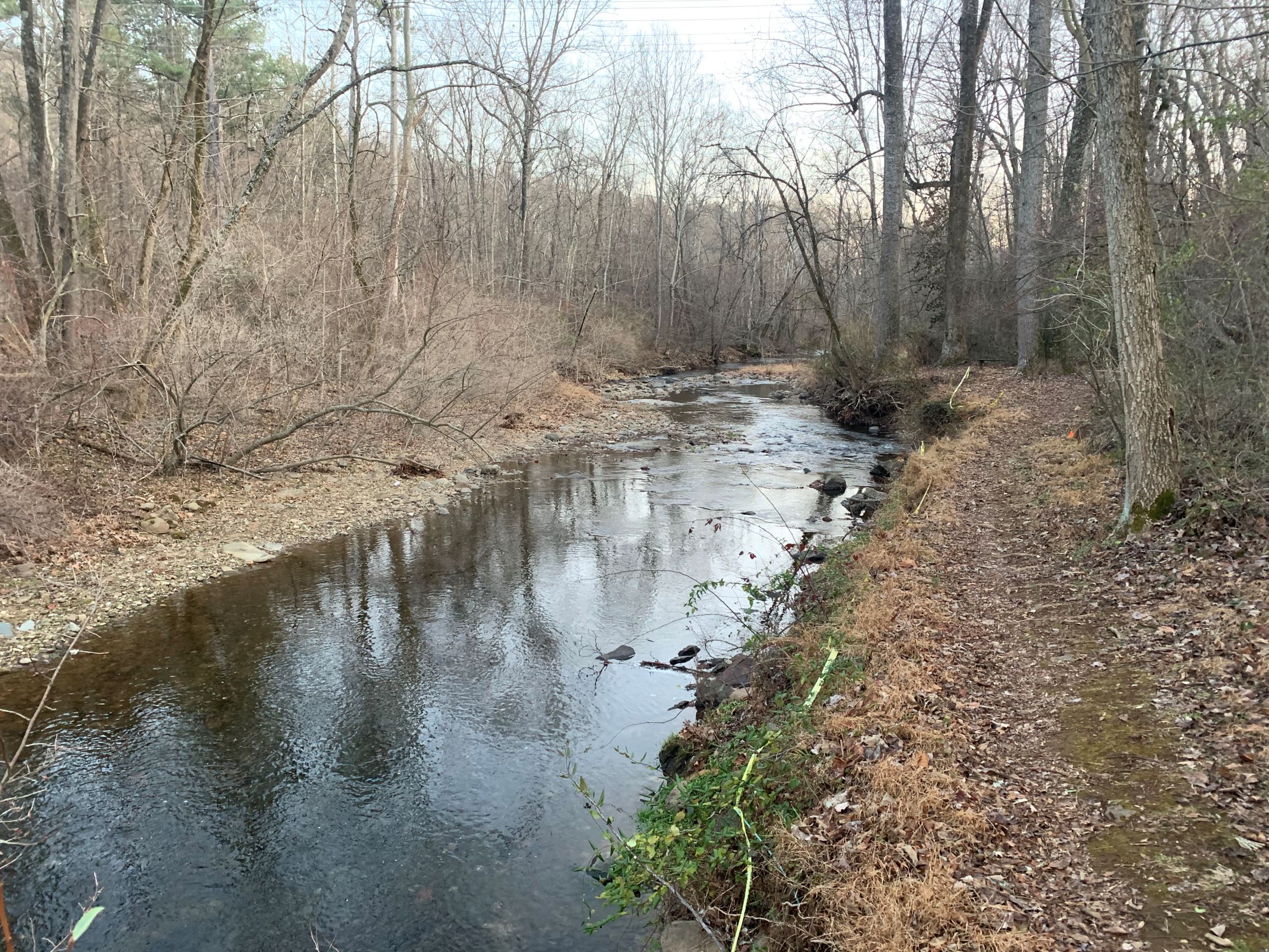At Friends of the Rappahannock, we love Rappahannock County Park in Little Washington. It has everything we look for in  a riverfront park, including trails, a large forest buffer, native plant gardens, and lots of interpretive signage to help visitors understand the importance of conserving our natural resources.
a riverfront park, including trails, a large forest buffer, native plant gardens, and lots of interpretive signage to help visitors understand the importance of conserving our natural resources.
As we began our research for the Upper Rappahannock Report Card, we were surprised to discover that the Rush River which runs through Rappahannock County Park is listed by the state Department of Environmental Quality (DEQ) as having bacteria levels that regularly exceed safe standards. As a result, we assigned the Rush River a grade of “Fail” for recreational health risk, one of sixteen categories addressed in the Report Card.
When we announced our findings at an October Report Card release event at Pen Druid Brewery, you could have heard a pin hit the concrete floor. The standing-room-only audience included representatives from several of the nonprofit groups that jointly steward the park. The result was jarring to many of the people who have dedicated years of time and resources into making Rappahannock County Park the jewel it is today.
The brief silence was followed by a flurry of questions.
“Bacteria? Are you sure?” Yes, we explained that the DEQ samples the stream regularly and confirmed the listing in October 2019.
 “How long has it been like this?” According to state data, this section of the Rush river has been listed for bacteria since 2002.
“How long has it been like this?” According to state data, this section of the Rush river has been listed for bacteria since 2002.
“Where is the bacteria coming from?” Research suggests a combination of pasture, septic overflow and wildlife.
“Could last year’s heavy rains have triggered the listing?” No, the listing is based on years of data which account for rainfall.
“Is it safe to swim in the river?” Yes and no. Bacteria fluctuates based on rainfall and other factors. Basic precautions can greatly reduce the risk of illness or infection.
The last question was the toughest one.
“What can we do?” There is no simple answer. However if there’s any group capable of tackling a problem like this, it’s the people of Rappahannock County. That’s why Friends of the Rappahannock is working with local leaders to tackle this problem on three fronts:
The first focus is on awareness. Accessing local streams is essential for our conservation mission, but direct contact with waterborne bacteria is a health risk. Therefore we are actively working with the Rappahannock County Parks Board to inform the community of the bacteria situation in the Rush River through local media and public postings at the park in spring 2020.
The second focus is water quality monitoring. We have partnered with the Piedmont Environmental Council, Old Rag Master Naturalists, and RappFlow to recruit and train volunteer water quality monitors that will sample the stream weekly for bacteria in 2020. Allowing for more water sample data will give local stakeholders and the DEQ better information about bacteria levels at the Park.
Lastly, our ultimate goal is to reduce bacteria pollution in the Rush River to the point where can be de-listed by the DEQ. To achieve that, we will work directly with landowners and partner organizations like the Culpeper Soil and Water Conservation District to continue installing best management practices that improve water quality.
Through collaboration, communication and on-the-ground action, we can enact meaningful improvements in bacteria pollution and help Rappahannock County Park achieve a clean bill of health.
To view more information regarding the Upper Rappahannock Report Card, go to https://riverfriends.org/upper-rappahannock-report-card/
By Restoration Coordinator and Educator Adam Lynch
December 2019

